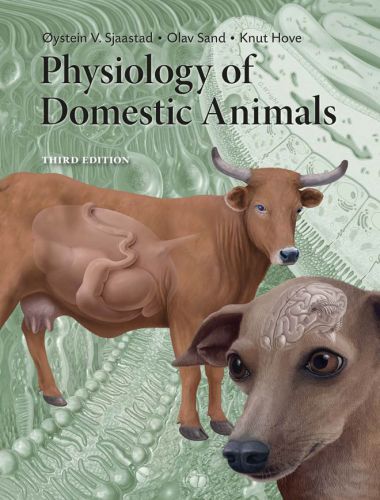Physiology of Domestic Animals, 3rd Edition
By Oystein Sjaastaad, Knut Hove, Olav Sand, Published: 2016, FileType: PDF

Physiology of Domestic Animals, 3rd Edition PDF is a state-of-the-art textbook co-authored by experienced teachers and researchers in animal physiology. The book is designed for use by students of veterinary-, animal-, and agricultural sciences. It emphasizes functional aspects of animal- and veterinary science, and aims at developing the problem-solving skills needed for careers in veterinary medicine and animal science. Physiology of Domestic Animals also provides an ideal basis for university courses in general mammalian and avian physiology.
The textbook is divided into 21 chapters. Frequent cross-referencing emphasizes how individual cells and organs of the body collaborate to create a functional unit.
In each chapter, an introductory ingress is followed by a short description of major aspects in the chapter. The body of the chapter provides a more detailed understanding of the physiological processes. The clinical examples included in the chapters are selected to illustrate the delicate balance between the normal processes of the body. Short statements summarizing central points in the main text are inserted in the margins. These statements are particularly useful when reviewing the chapters. Inserted questions reveal whether adequate understanding of important issues has been achieved. Answers to the questions can be found in the associated main text. Anatomy and Physiology for Veterinary Technicians and Nurses : A Clinical Approach
Basic knowledge of physics, chemistry, and biochemistry is required to comprehend physiology. The book contains an introductory chapter presenting an overview of some of the most relevant topics of these fields.
There are no logical boundaries between cell biology and physiology. Knowledge of cell biology is therefore a necessary platform for the understanding of animal physiology. Consequently, the book offers an introduction to cell biology, and describes how cells interact and contribute to the various functions of tissues and organs (chapters two and three).
In the comprehensive and user-friendly index, bold page numbers direct the reader to main descriptions or definitions, whereas numbers in italics refer to figures.
Direct Link For Paid Membership: –
